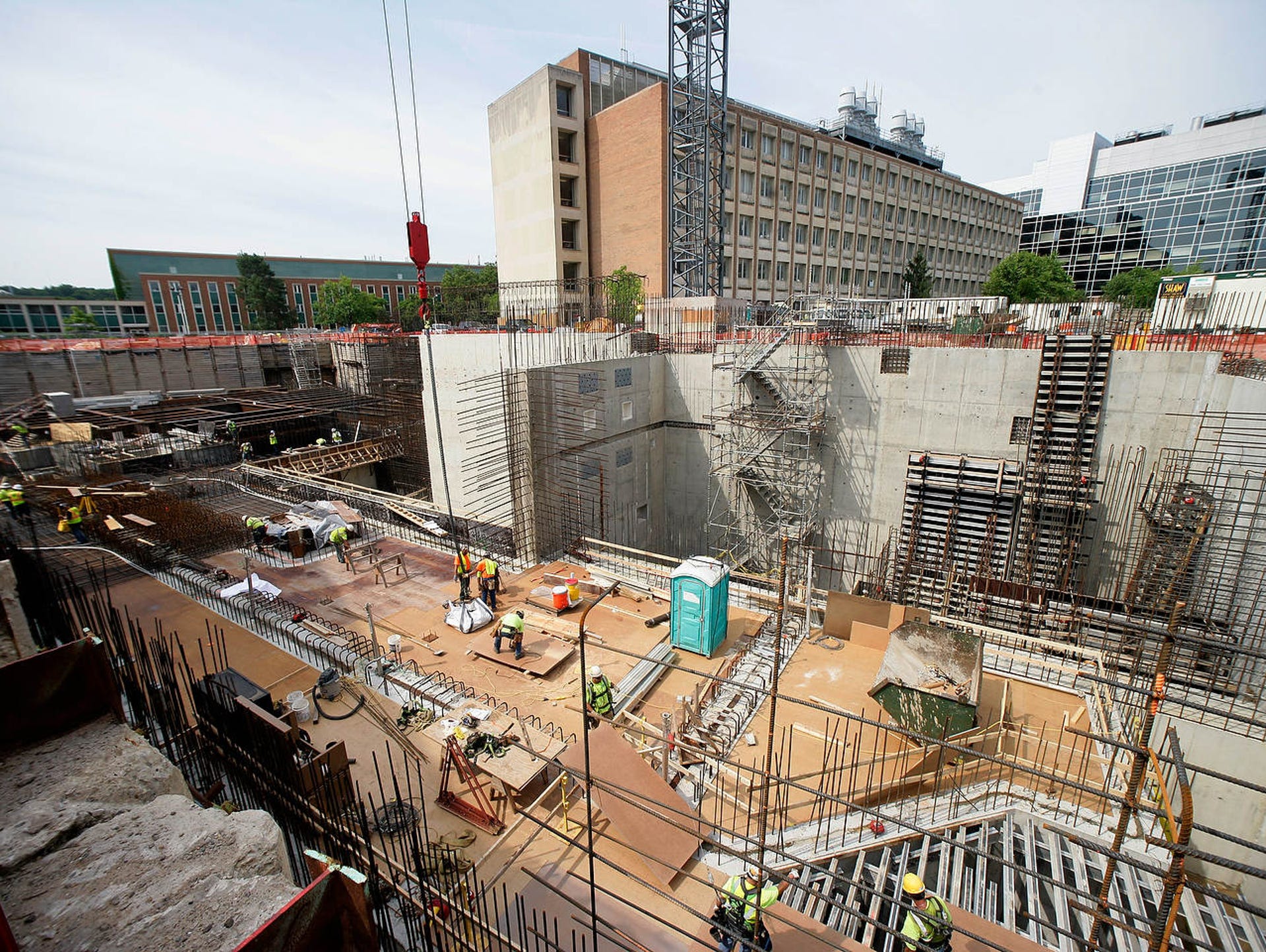Facility for Rare Isotope Beams (FRIB)
A project of such national importance deserves its own thread. The FRIB is ahead of schedulep as far as construction is concerned. It's pretty crazy how this thing has gone so under the radar when it possibly the most nationally consequential science project in years.
What the FRIB will do:
EAST LANSING – Construction on MSU's $730 million Facility for Rare Isotope Beams is nine weeks ahead of schedule and crews are preparing to install the first pieces of technical equipment later this year.
While observers can see many of the facility's buildings slowly taking shape, much of the work is taking place 30 to 40 feet below the surface, said Brad Bull, director of the Conventional Facilities and Infrastructure Division. As concrete slabs solidify to form the foundation of FRIB's first surface building, Bull is turning to the task of ensuring the infrastructure is in place and prepared for the installation of scientific equipment far below.
What the FRIB will do:
•The chain of events begins at the eastern edge of the facility, where ion sources will boil a sample element until electrons are removed. Pushing the ionized atoms around with electric and magnetic fields, beams will be created and injected into the nearby linear accelerator.
•Receiving the charged particles, the 400 kilowatt superconducting linear accelerator will drive the beams down the track. The highest intensity beams will be observed at half the speed of light.
•After traveling along the track, the beams will strike a target inside the rare isotope production area. When the beams hit and the nuclei collide, the much sought-after rare isotopes are produced.
•Following the collision, detectors in the nearby experimental area will measure the properties of the rare isotopes and help to provide better understanding of the substances. Often, the rare isotopes exist for fractions of a second on earth, yet scientists believe studying them will give us a better idea of how the universe came to be.


Comments
FRIB is still very much on schedule, it appears: https://www.detroitnews.com/story/news/local/michigan/2019/08/03/michigan-state-nuclear-research-facility-set-open-2021/1913368001/